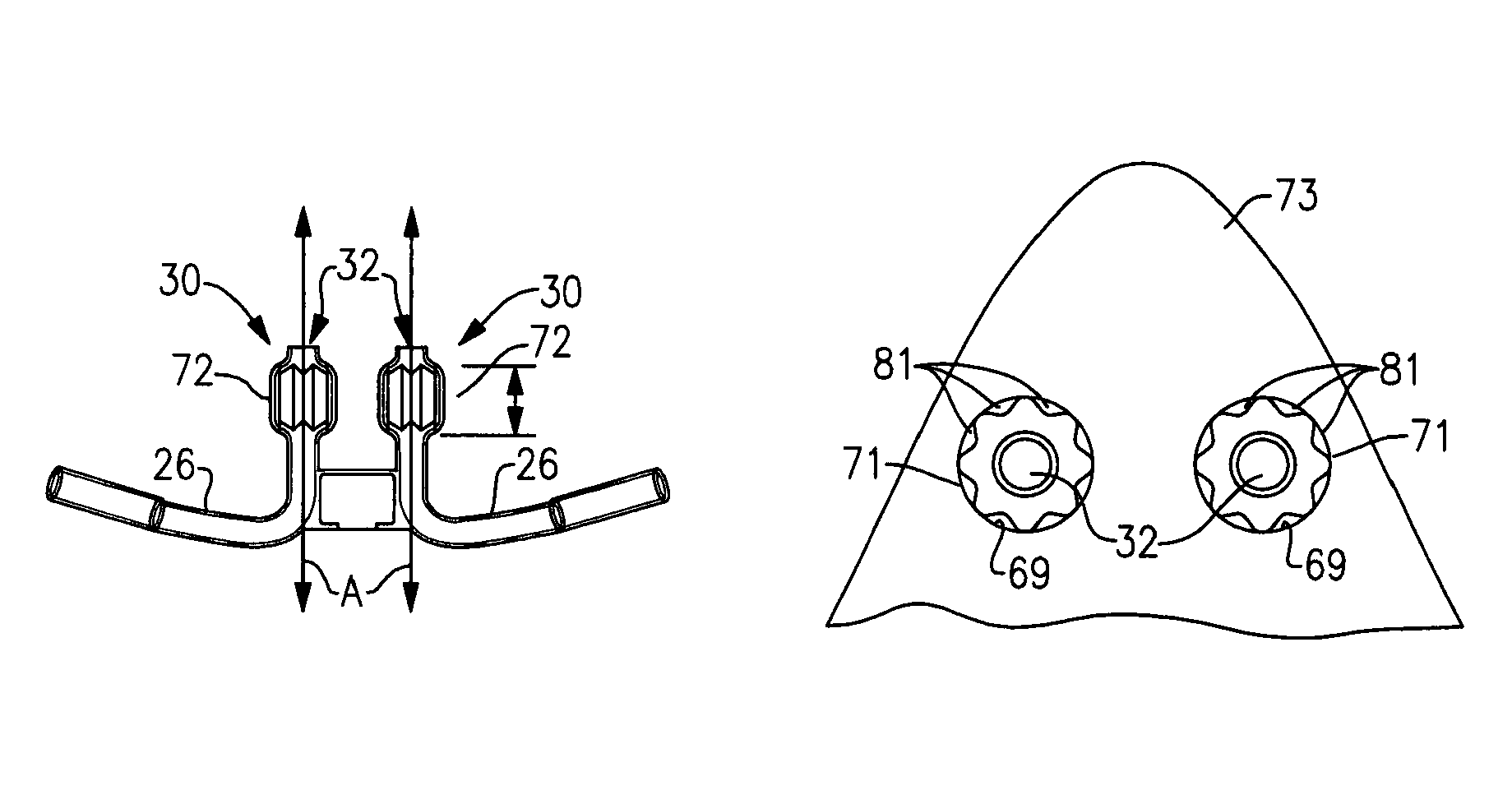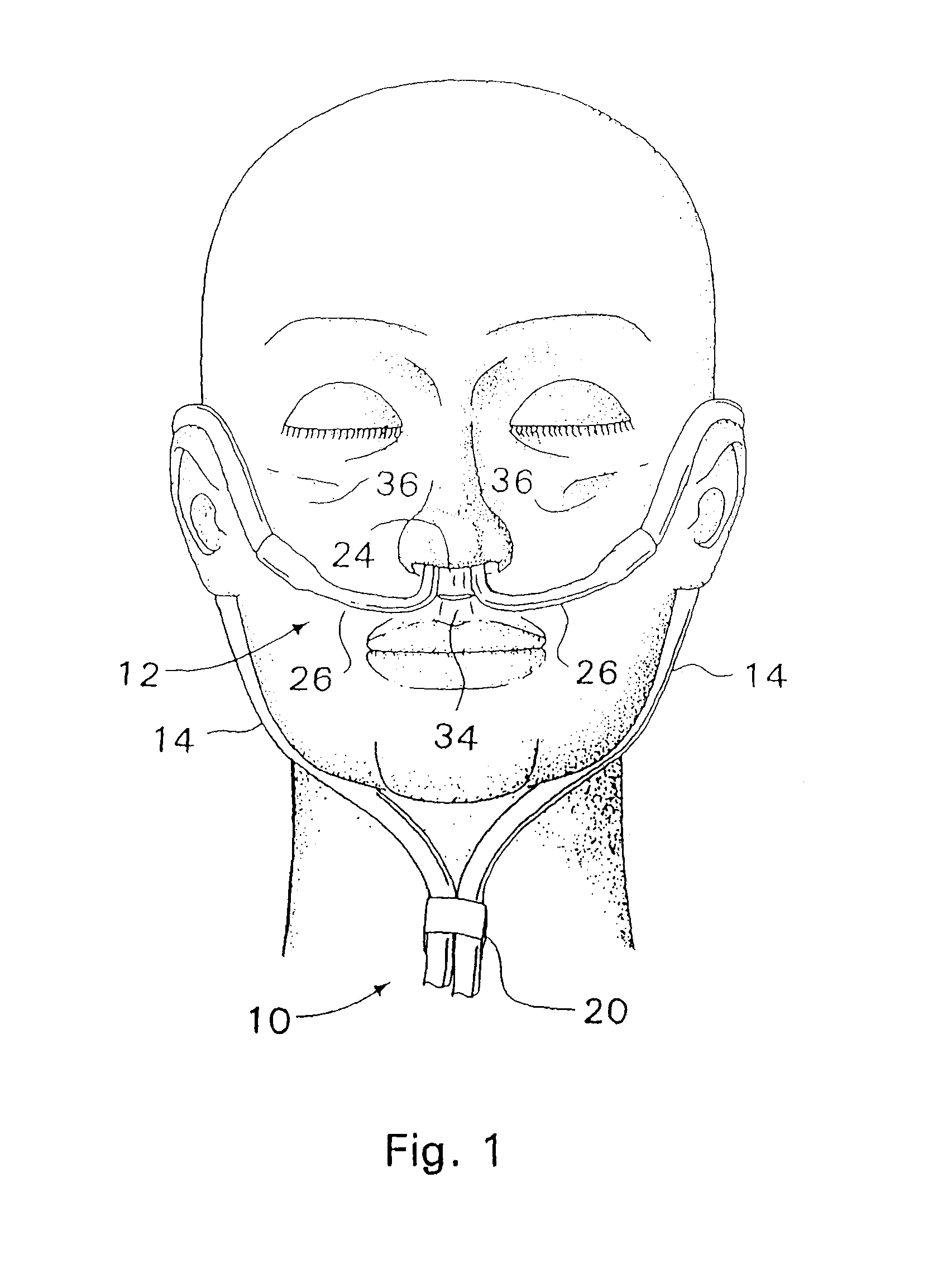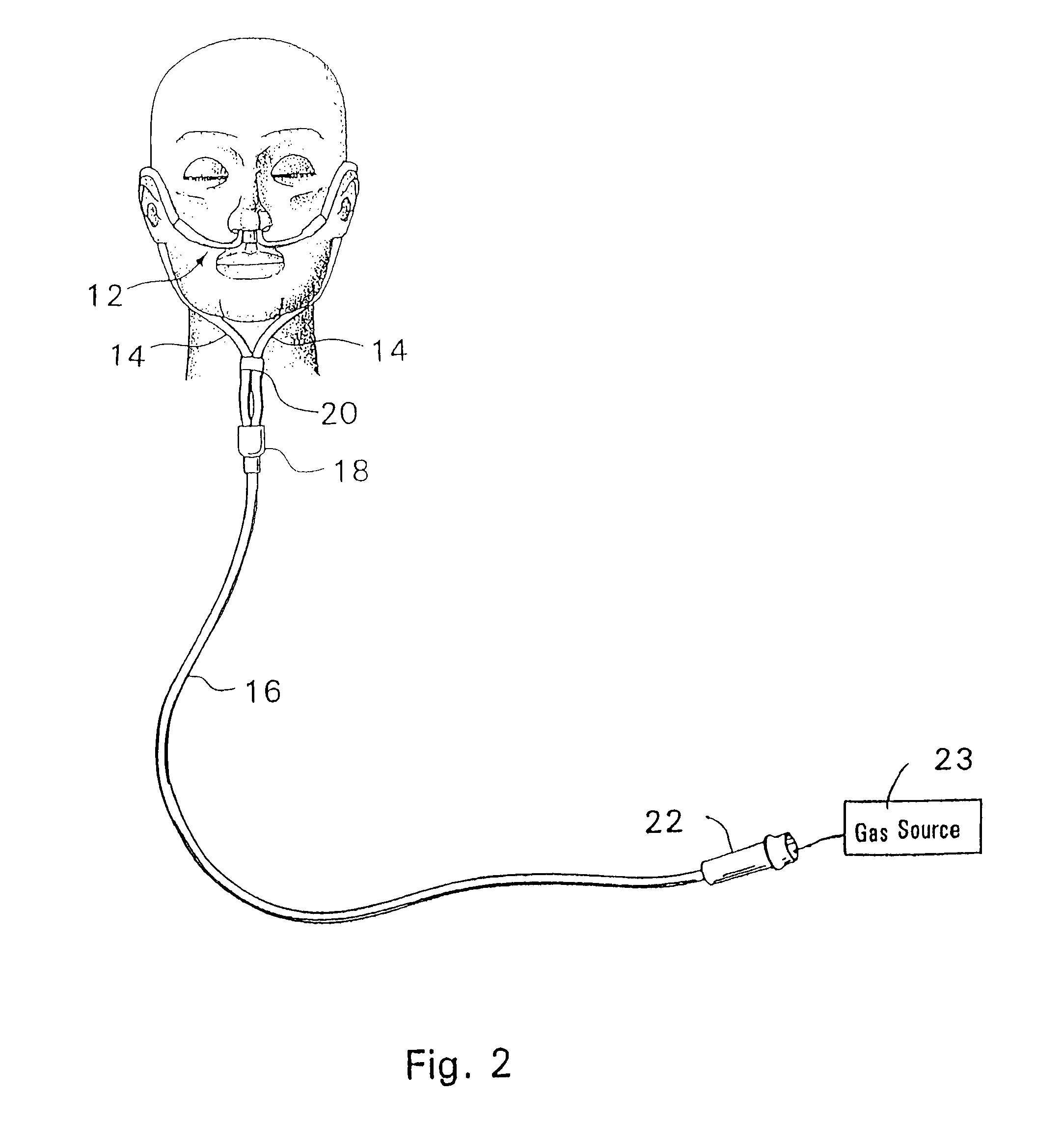Respiratory therapy system including a nasal cannula assembly
a technology of respiratory therapy and cannula, which is applied in the direction of respirators, operating means/releasing devices, diagnostic recording/measuring, etc., can solve the problems of irritation and inflammation, wearer frequently encountered discomfort, and patient usually begins to experience discomfort, so as to facilitate exhaustion of any excess respiratory gas, accurately predict breathing characteristics, and high pressure drop
- Summary
- Abstract
- Description
- Claims
- Application Information
AI Technical Summary
Benefits of technology
Problems solved by technology
Method used
Image
Examples
Embodiment Construction
[0076]Referring to the drawings wherein like or similar references indicate like or similar elements throughout the several view, a nasal cannula assembly, according to the present invention, generally designated by reference numeral 10, is shown in FIGS. 1 and 2 in an operative position on a patient's face. The nasal cannula assembly 10 comprises a nasal cannula 12, a pair of auxiliary respiratory gas supply lines 14 connected to supply lines or arms 26 of the cannula (described below in further detail), a main respiratory gas supply line 16, a connector 18 for coupling each of the auxiliary lines 14 to the main respiratory gas supply line 16, an optional slip loop or line tightening member 20 disposed about auxiliary lines 14 for facilitating adjustment of the auxiliary lines about the patient's ears and head, and an end connector 22 for facilitating connection of a second end of the main respiratory gas supply line 16 to a pressurized respiratory or respiratory gas source 23. As ...
PUM
 Login to View More
Login to View More Abstract
Description
Claims
Application Information
 Login to View More
Login to View More - R&D
- Intellectual Property
- Life Sciences
- Materials
- Tech Scout
- Unparalleled Data Quality
- Higher Quality Content
- 60% Fewer Hallucinations
Browse by: Latest US Patents, China's latest patents, Technical Efficacy Thesaurus, Application Domain, Technology Topic, Popular Technical Reports.
© 2025 PatSnap. All rights reserved.Legal|Privacy policy|Modern Slavery Act Transparency Statement|Sitemap|About US| Contact US: help@patsnap.com



